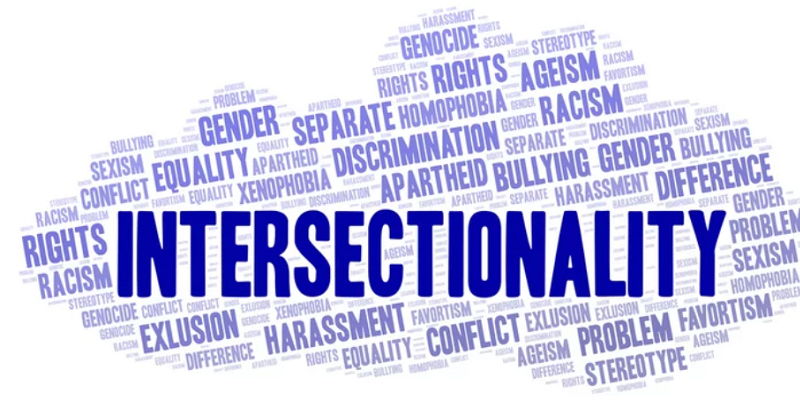Intersectionality is an important concept that describes how different aspects of a person’s identity intersect and interact. While everyone has multiple identities, some individuals may experience unique challenges because of the intersection of their identities. For example, a person who is both Black and LGBTQ+ may experience discrimination based on both their race and sexual orientation. Organizations that recognize and address these challenges can create policies and practices that support diversity and inclusion, thus promoting a workplace culture that values the contributions of all employees.
The importance of intersectionality in the workplace
Organizations that prioritize intersectionality can promote inclusion for marginalized or underrepresented groups, such as women, people of color, LGBTQ+ individuals, individuals with disabilities, and individuals from low-income backgrounds. By understanding the unique challenges faced by these groups and creating programs and policies that address them, organizations can create a more diverse and inclusive workplace. This is crucial not only for promoting fair treatment and equal opportunities for employees, but also for attracting and retaining top talent who have different perspectives and experiences.
A more diverse workplace can also lead to increased creativity and innovation, as individuals from different backgrounds bring unique ideas and perspectives to the table. Additionally, it can improve organizational performance and financial results, as diverse teams are better equipped to tackle complex problems and adapt to changing business conditions.
8-Inclusion Needs Framework
One way organizations can address intersectionality is by using the 8-Inclusion Needs Framework. This framework recognizes eight key needs that are critical to creating an inclusive workplace for all individuals, regardless of their identities.
1. Access: Every employee should have access to the resources and support necessary to thrive in the workplace. This includes physical resources such as technology and equipment, as well as social resources like mentors and allies.
2. Workspace: Employees should feel comfortable and safe in their physical and virtual workspaces. This requires providing adequate space for everyone, including those with different mobility needs or sensory sensitivities.
3. Opportunity: All employees should have equal opportunities to advance in their careers and contribute to organizational success. This means creating fair promotion processes, mentoring programs, and leadership development opportunities.
4. Representation: The workplace should reflect the diversity of the broader community, including employees from different racial, ethnic, gender, and socioeconomic backgrounds. Providing representation at all levels of the organization can help ensure that different perspectives are heard and valued.
5. Inclusion: Employees should feel comfortable bringing their whole selves to work without experiencing discrimination or harassment. This requires establishing a culture of respect and acceptance, where individuals are free to express their identities and beliefs.
6. Language: The language used in the workplace can have a significant impact on employee well-being and inclusion. Using inclusive language that recognizes the diversity of identities can help create a more welcoming environment for everyone.
7. Respect: Treating all employees with respect is critical to creating an inclusive workplace. This means valuing differences and challenging biases and stereotypes.
8. Support: Every employee should have access to support when they need it, whether in the form of mental health resources, financial assistance, or any other form of support. This can help ensure that individuals are able to succeed both personally and professionally.
Practical ways to apply the 8-Inclusion Needs Framework
To apply the 8-Inclusion Needs Framework, organizations can take practical steps to address each of the eight needs. For example, to address the need for access, organizations can provide employees with any necessary accommodations, such as assistive technology for individuals with disabilities. To address the need for representation, organizations can create programs to attract and retain employees from diverse backgrounds and provide mentorship and sponsorship opportunities for underrepresented groups. To address the need for support, organizations can provide confidential counseling services, financial planning resources, or flexible work arrangements to help employees balance their personal and professional lives.
Other practical steps may include providing education and awareness-raising programs to help employees understand the importance of intersectionality and how to address it in their work. Organizations can also conduct regular diversity and inclusion assessments to evaluate their progress and identify areas for improvement.
Intersectionality for All Employees
It’s important to note that intersectionality is not just about addressing the experiences of marginalized or underrepresented groups. It’s also about recognizing and valuing the diversity of all employees, regardless of their identities. By acknowledging the intersections of identities, workplaces can create an environment that values the unique perspectives and experiences each employee brings to the table. This can lead to increased collaboration, creativity, and innovation, as well as improved employee well-being and job satisfaction.
Addressing Systemic Issues with Intersectionality
Intersectionality can also help to identify and address systemic issues that may affect certain groups of employees. For example, if women are consistently passed over for promotions, an intersectional approach might consider how race, sexual orientation, or other intersecting identities might also be contributing to this problem. By understanding how different identities intersect, workplaces can create policies and practices that address these issues and promote fairness and equity for all employees.
Intersectionality is crucial for promoting inclusion in the workplace. By assessing their policies, practices, and culture in light of the 8-Inclusion Needs Framework, organizations can create a more inclusive environment that promotes the well-being and success of all individuals. This requires recognizing and valuing the diversity of all employees, creating fair and equal opportunities for career advancement, and addressing systemic issues that affect different groups of employees. In doing so, organizations can attract and retain top talent, promote creativity and innovation, and ultimately improve their bottom line.

